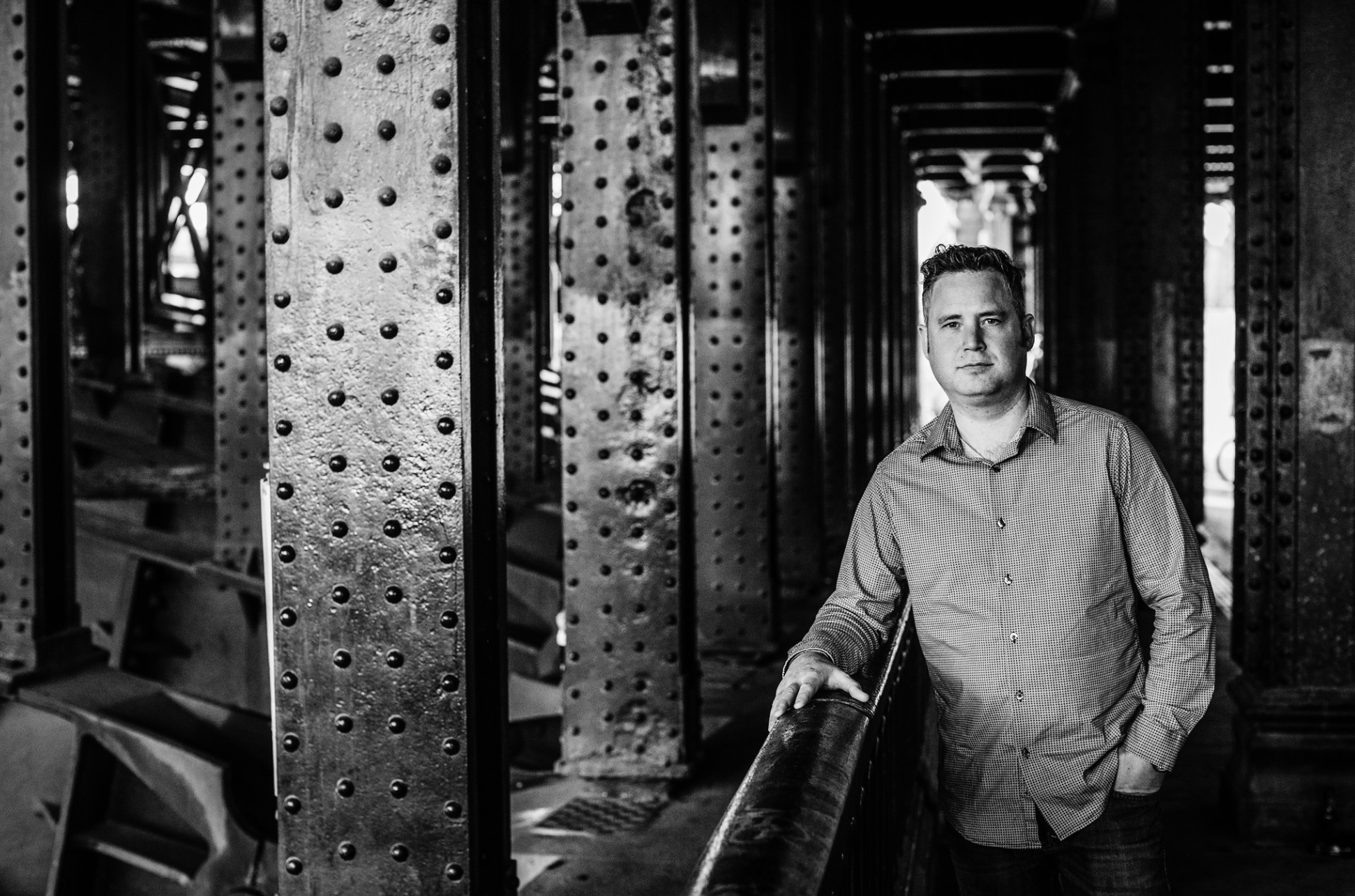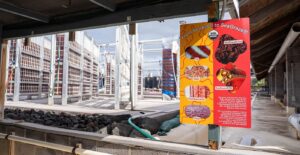Motorleaf is a Canadian startup that has built a smart and automated indoor farming operating system, consisting of hardware devices and software analytics, to enable growers to capture data about their crops, learn what the crops need, and instruct existing equipment to answer those needs.
The motorleaf system can be used in any type of indoor farming operation from greenhouses through to warehouses and at any size. Motorleaf receives 40,000 data points per customer per week and therefore can start predicting a crop’s needs, solving potential problems before they exist. Also, the startup plans to use its network of data and growers to connect users to each other – on an opt-in basis – to share data, plant recipes and knowledge.
We caught up with Ally Monk, CEO of motorleaf, a few months after the business raised a $1.1 million seed round of funding — which was launched on AgFunder — to get an update on how the business is progressing.
It’s now been seven month months since you closed your seed round; how have you spent the proceeds so far?
The first thing we bought was a robot vacuum we’ve named Elroy (from the Jetsons). That was about the extent of any extravagant spending. Other than welcoming Elroy, we’ve increased the team and invested in talent that builds amazing software, hardware and understands the needs of our client base.
We’ve been fortunate to be invited to talk at a few events in Vegas and Tokyo on the topic of artificial intelligence and big data at agriculture-focused events, so some travel as well. We’ve also invested in a small secondary location to accommodate testing our new technology on various crop types.
What have been your biggest milestones to-date?
I think if I could pick my top three they would be:
1) Getting picked for the FounderFuel accelerator AI cohort; can you imagine how many companies applied for the six places on offer? And then becoming a ‘proper company’ soon thereafter! That was quite the journey in itself, which I did a TEDx talk about.
2) Building two versions of our hardware — now five different units — and software within 12 months, with the deployments proving everything is working as it should. That may sound simple, but it’s like building two different companies with half the budget normally needed for both. Then getting repeat orders.
3) Seeing real AI + Machine Learning built out, integrated into our software, deployed in indoor farms, and then seeing it exceed expectations. As we now like to say: “AI is what we do, it’s not a buzzword.’
What are your priorities for the rest of 2017?
Again – it’s never just one thing – my top three are:
1) We’re looking to grow the team, so planning for that big next step will begin in Q4 2017.
2) Continued and increased communication with our clients; we learn more in these interactions than in any staff meetings.
3) Stick to our technology road map. It’s aggressive, but with access to some of the best R&D financial programs in the country (Canada) and likely in the whole of North America; we can do more with one dollar than most companies — even those that outsource overseas.
What have been the biggest challenges to getting where you are today?
Focus. Every day we are approached by potential companies/partners/distributors/clients that ask us to work with them, and some cases ask us to modify what we have for them. We can only do so much, so trying not to get distracted by people from all over the world who reach out is tough. It’s exciting to know your little idea that went from a friendship + prototype in a ski town of 4,000 people, in less than two years is getting contacted from all corners of the planet; it’s amazing, but it could break us if we don’t execute a plan that’s agreed and well thought out.
What are the biggest hurdles ahead?
If I knew that we’d be bullet proof! The hurdles we know of center around what parts of a very large market we double down on. Part of what investors expect you to do with seed money is investigate various hypotheses. Our technology can help an indoor farmer who grows in a grow tent, and all the way up to hundreds of acres under glass. So we can’t service everyone the same way, and at times that feels like leaving money on the table. So a huge challenge is looking at which partners to ‘allow’ your products to be sold by, where we won’t wish to focus directly ourselves, but still know there is huge sales potential.
That and the fact I still sleep on the office floor on an air mattress due to workload. That’s proving to be a challenge- I may upgrade to a futon at some point!
Machine learning and AI are all the buzz across industries today, but it seems to me that it takes some time before a startup can really start deploying this tech and it requires a lot of data. Do you agree?
Access to data is certainly an issue for a lot of young companies, but likely, more importantly, access to data you can parse/understand/and then draw relevant conclusions from is harder still. Where we see a huge advantage on what we’re able to do, is the fact we can collect data ourselves, we don’t have to rely on someone else’s data. We’ve processed over 1 million datasets since we started deploying our units, but not all that data is useful. So it may sound a lot, but in the big scheme of things, we’ve just gotten started.
What’s your take on early stage startups name dropping their use of AI/ML?
It doesn’t take long for young startups to hear “just say you do AI – investors love it!” and so they add it to their company description. One of our mentors at our accelerator program was Jean-François Gagnét, Founder/CEO of Element AI. They raised 100 million recently, and are by far the company with the most ‘AI talent’ in N America, perhaps the world.
He said to us “What you need to remember is that you never tried to convince anyone you were doing AI, you were doing it before the buzzword came along, so keep building out as you planned, and no one can accuse you of jumping on the band wagon.” It was a big relief to hear him say that, as now, only a short time after we ’emerged’ we feel we have to justify the use of these terms in what we do, and then remember that we actually don’t.
The proof is in the pudding; once we’ve finished our private beta, I can’t wait to show our clients video testimonials on how our AI/Machine Learning helps them.
So I would say this: ask how many crops a young company can successfully use AI/Machine Learning on: the higher the number, the more salt you should sprinkle on their answer. Growing crops and proving out this kind of tech takes a lot of time; plants take time, results take time, triple testing and more takes time.
Where is the indoor ag industry today? How fast is it growing in Canada and beyond?
I think it’s at a crossroads. A lot of great press for the industry is making people aware technology MUST help it transform, investors are aware it’s one of the last huge industries that’s been around for centuries that’s ripe for disruption, or just ‘change’ if you want to avoid the cliche buzzwords!
However, technology needs to travel. Data needs not to be kept behind closed doors, especially when the farmer is the one who owns it, and will benefit the most if it’s allowed to visit other service providers to help him/her get better insight/results.
So the market is certainly growing fast, but it’s shooting off in different directions.
In Canada and the US we’ve found a ton of growers who EXPECT tech to help them, and if fairly new to growing crops indoors, are quickly frustrated by some of the incumbents in the market who seem to think they have no obligation to change how their systems work to accommodate any newcomers trying to work with indoor farmers.
It reminds me of the first time I used Uber, I asked myself: ”Why did it take someone from outside of the taxi industry to come up with this; it’s a way better service.” Then I realized, they all had it way too easy being top dog in their city, no real need to service their customers any better.
Agtech is moving so fast, and young companies are laser-focused on the needs of real customers across the world. So you can’t help agree with David Bowie: “Tomorrow belongs to those who can hear it coming.” If you choose to listen that is.




